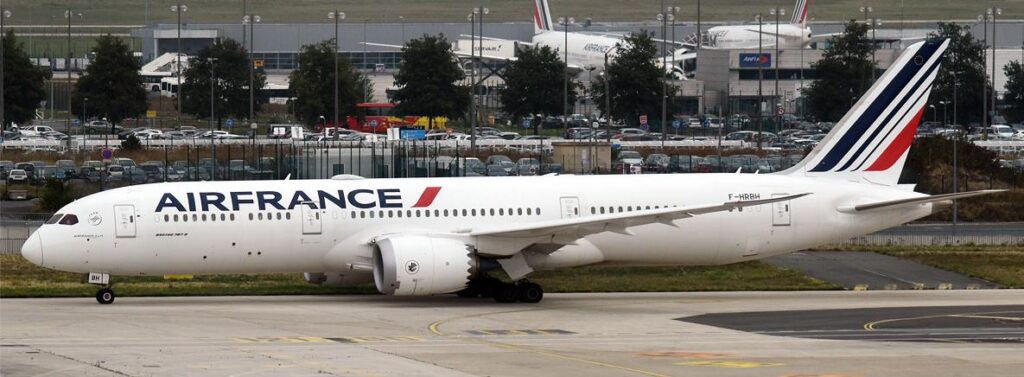Outside of aeronautics, composite materials are very fashionable, they represent everything high-tech, cutting edge and well engineered. There are carbon fibre golf clubs, bath tubs and suitcases. Within the aeronautics industry composites are also held in high regard; the path to weight savings, complex geometries and fewer parts.
Yet it is also very hard to quantify exactly how beneficial composites are. They are very different to aluminium, and challenges such as impact resistance, expensive manufacturing processes and repairability lead to different design philosophies, which in turn make it difficult to compare composite and metal designs directly.
The Boeing 787-9 and Airbus A330-900


Fortunately we can compare two real world aircraft. The Airbus A330-900 and the Boeing 787-9 are remarkably similar with one critical difference; the 787 has about 40% more composites by weight in the structure.
| Airbus A330-900 | Boeing 787-9 | Difference (A330 baseline) | Comments | |
|---|---|---|---|---|
| Composites (% of structural weight) | 10% | 50% | – | Non-technical figures taken from marketing material |
| Maximum Take-Off Weight | 251000kg 553360lbs | 254011kg 560000lbs | 101,1% | Both aircraft available in multiple weight variants, heaviest used |
| Operating Empty Weight | 127000kg 280000lbs | 128850kg 284000lbs | 101.5% | |
| Fuselage Length | 62.84m 206.2ft | 62.00m 203.4ft | 98.7% | |
| Fuselage Width | 5.64m 18.50ft | 5.75m 18.86ft | 102.0% | |
| Wingspan | 64.00m 209.97ft | 60.12m 197.24ft | 93.9% | Original A330-300 60.30m |
| Maximum Fuel Capacity | 139090l 36743gal | 126206l 33340gal | 90.7% | |
| Engines | Rolls-Royce Trent 7000 | Rolls-Royce Trent 1000 | – | 787 also available with General Electric GEnx engines Trent 7000 is certified as a variant of the Trent 1000 |
| Engine Thrust (Take-Off) | 324kN 72838lbf | 347.5kN 78121lbf | 107.2% | Both engines available in different thrusts, highest thrust versions taken |
So What is the Weight Difference?
Since the two aircraft share very similar take-off weights, engines, fuselage sizes and wingspans, we can say that any differences in structural weight will be principally due to the change in materials (composites or metals).
Unfortunately there is no public data for the structural weight of either aircraft, the best we have is the OWE (Operating Weight Empty) which included many non-structural items such as avionics and engine oil in addition to the structure, and is around 128t for both aircraft. While the definition of OWE is sufficiently vague that the two OWE weights should not be seen as directly comparable and no conclusions can be drawn about which aircraft is really lighter, we can say that any difference in OWE, and therefore also structural weight, is minimal.
Is there a Performance Difference?
If, in addition to the previous similarities, the aircraft have similar OWEs, we might also expect the performance to also be the same. Yet here we can however find a clear difference; the A330 needs about 10% more fuel to achieve the same maximum range as the 787 and correspondingly can carry around 8t less payload. The 787 is clearly the winner here, it burns less fuel and can carry more fare paying passengers or cargo. Indeed the result is perhaps not surprising when some of the possible factors are considered:
- The A330 platform is an older design by about 20 years and despite some optimisation with the new -800/-900 upgrades (new wingtips etc.) the Airbus remains aerodynamically inferior
- The 787 is a much more electric-driven platform with wing de-icing and air-conditioning all provided through electrical power instead of being tapped directly from the engine. This means much less precious high pressure bleed-air is needed; typically 0.5% for the 787 but 2.5% for the A330
What Does This All Mean?
The 787-9 needs up to 10% less fuel than the A330-900 to fly the same routes. However with the other aerodynamic and architecture differences between the aircraft it is impossible to single out the effect due to the use of composites alone, nevertheless since the OWEs are so similar, the improvement is at most a few percent and probably close to zero.
Sources
- EASA Type-Certificate Data Sheet EASA.A.004 for Airbus A330 series aircraft (Issue 48/22.11.2018)
- EASA Type-Certificate Data Sheet EASA.IM.A.115 for Boeing 787 series aircraft (Issue 24/28.10.2019)
- EASA Type-Certificate Data Sheet EASA.E.036 for Rolls-Royce Trent 1000 and Trent 7000 series engines (Issue 15/30.4.2019)
- Airbus Airport Planning Information for A330 series aircraft
- Boeing Airport Planning Information for 787 series aircraft